Hot 10 Types of Belt Conveyor Troubleshootings
Belt conveyor often encounters some problems in the working process, which affects the smooth progress of the whole production. In this article, some most common problems and troubleshooting that are easy to appear in the working of belt conveyors are as below:
1. Abnormal Voice
Phenomenon: the sound of belt conveyor in normal operation is very small, and suddenly there is a large abnormal noise.
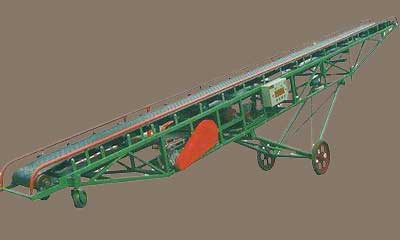
Cause Analysis:
- Bearing damage;
- Serious eccentricity of idler;
- The failure of the coupling causes the drive device and the steering device to make a rattling noise.
Solution:
- Replace the damaged bearing;
- Replace the idler;
- Replace the coupling.
2. Broken Belt
Phenomenon: the belt of belt conveyor breaks suddenly
Cause Analysis:
- Normal wear and tear of belt during long-term operation;
- The blocking of large materials makes the belt tension suddenly increase, resulting in belt breaking;
- Belt breakage caused by belt tearing due to belt deviation.
Solution:
- The belt conveyor shall be maintained frequently to prevent large materials from blocking the belt;
- When choosing a belt, we should choose the belt with good quality;
- Repair the damaged funnel in time to prevent the material from hitting the belt and causing damage.
3. Belt Slipping
Phenomenon: the material slipping on the belt and cannot be transported normally.
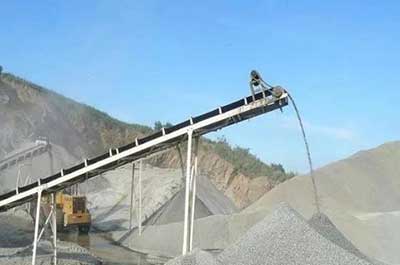
Cause Analysis:
- The initial tension of the belt is insufficient, causing the belt to slip;
- There is too much dust at the tail of the belt conveyor, and the resistance is too large, resulting in slipping.
Solution:
- Increase the initial tension of the belt (it can be realized by adjusting the tension device of the belt);
- Reduce the single load of belt conveyor;
- Replace the higher power drive motor.
4. Belt Deviation
Phenomenon: Belt deviation is the most common trouble in the working process of a belt conveyor. Once the belt conveyor has belt deviation, it will cause material scattering and serious wear of the belt, which will affect the normal production of the production line. In particular, severe friction between the belt and the frame will soften the belt or even cause a fire accident.
Cause Analysis:
- The conveyor head, tail and middle frame is no longer in the same straight line, causing deviation;
- The installation position of the drum idlers are not correct, which causes the belt to run off at the drum;
- Belt deviation caused by improper and uneven joint of belt conveyor (often occurs at the joint of belt);
- Deviation caused by improper roller support or loose screw fixing roller support on roller support;
- Deviation caused by long-term wear of conveyor belt;
- Belt deviation caused by unbalanced load;
- Deviation caused by material impact.
Solution:
- Adjust the conveyor head, tail and intermediate frame to make them in the same straight line;
- Adjust the installation position of the drum so that its axis is not only vertical to the longitudinal center line of the belt, but also parallel to the horizontal plane;
- Cut out the improperly belt joint to ensure the flatness of the joint;
- Correct the idler frame so that its error is controlled within the allowable deviation. Tighten the loose bolts;
- Strengthen the dimensional inspection of the belt, repair or replace the damaged belt in time;
- Adjust the material chute, adjust the height and size of the material, or install the material buffer device.
5. Belt Scattering
Phenomenon: the belt conveyor often scatters materials in the working process, and the reasons are various.
Cause Analysis:
- Belt deviation scattering. When the belt is running, the height of belt two edges changes, and the material is scattered from the low side;
- Scattering materials at the hopper, guide chute, etc. For example, the belt conveyor is seriously overloaded or the rubber apron of the guide chute of the belt conveyor is damaged;
- Scattering material when concave belt is suspended. When the curvature radius of concave section is small, the belt will be suspended, the groove angle will be smaller, and some materials will be scattered.
Solution:
- Adjust the belt deviation;
- Control delivery capacity and strengthen maintenance;
- Larger curvature radius of concave section should be used to avoid scattering materials.
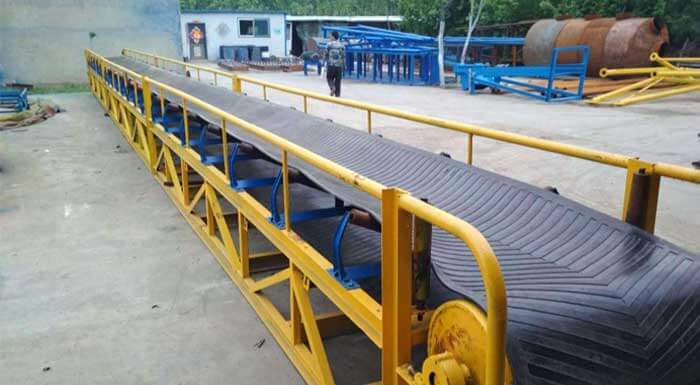
6. Belt Wear
Cause Analysis:
Belt wear is one of the common faults of belt conveyors, mainly caused by factors such as large material particles, irregular shapes, high hardness, excessive belt tension, and unreasonable conveyor structure design.
Solution:
- Regularly check the wear of the belt and replace the severely worn parts in a timely manner.
- For material issues, the material handling process should be optimized to reduce the wear of belts caused by large particles, irregular shapes, and excessively hard materials.
- Adjust the tension of the belt to avoid wear caused by excessive tension.
- Optimize the structural design of the conveyor to improve conveying efficiency and the service life of the belt.
7. Gearbox Broken Shaft
Cause Analysis:
- Internal reasons: The internal shaft stress design of the gearbox is unqualified, the transition fillet design is insufficient, the heat treatment of mechanical processing is unqualified, and the hardness or material is unqualified;
- External reasons: Improper selection of deceleration gear by personnel during operation, inadequate installation of fixed device for gearbox, and inadequate dynamic balance of coupling and brake wheel.
Solution:
After the occurrence of a broken shaft fault, the equipment should be powered off first, and the gearbox should be disassembled for a comprehensive inspection to ensure that there are no other fault points except for the broken shaft. After reinstalling the new shaft, all fasteners should be fully tightened, and the installation distance should be carefully checked to ensure that the shaft is aligned. Lubricating oil should be added to key connection parts such as bearings, and then a power on test should be conducted.
8. Motor Burnout
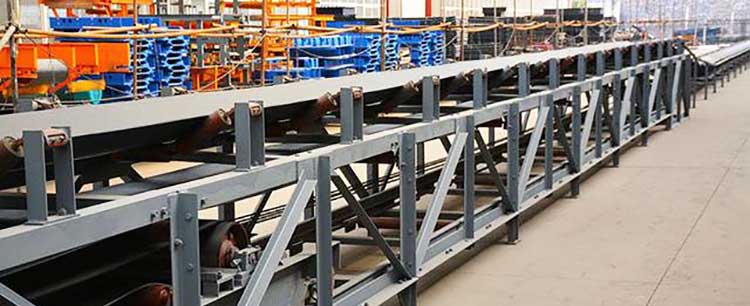
Cause Analysis:
- The motor is overloaded or the input voltage quality does not meet the requirements.
- The working time of the belt conveyor is long, the load is heavy, and the cooling device is not ideal.
Solution:
- Consider increasing power supply capacity or configuring a dedicated line separately.
- Timely replace the fan of the motor or add dust removal devices to ensure timely cooling of the motor.
9. Gearbox Oil Leakage
Cause Analysis:
- The ventilation opening is too small or blocked, resulting in poor ventilation inside and outside the reducer, and an increase in pressure inside the box.
- The sealing surface was not cleaned properly during installation or the sealing material was improperly selected.
- Low viscosity of lubricating oil or improper oil injection can lead to oil leakage.
- The wear between the bearing and the oil seal causes the lip of the oil seal to deform and lose its sealing effect.
Solution:
- Improve the ventilation device design of the gearbox to ensure that the vent size is appropriate and unobstructed, ensuring smooth internal and external ventilation and reducing pressure inside the box.
- Clean the sealing surface before installation and select appropriate sealing materials.
- Regularly check the oil level and quality of the lubricating oil, and replace or supplement it in a timely manner. Meanwhile, pay attention to the operating temperature of the gearbox to avoid prolonged high-temperature operation.
- Regularly inspect the wear of bearings and oil seals. If severe wear is found, it should be replaced in a timely manner to ensure sealing performance.
10. Belt Conveyor Idlers Do Not Rotate

Cause Analysis:
- The roller does not come into contact with the conveyor belt.
- The outer shell of the roller is obstructed by coal slurry or the end face of the roller interferes with the roller support.
- The sealing of the roller is poor.
- Insufficient stiffness or poor lubrication of the bearing seat.
- The working environment is dusty, and dirt enters the bearings, causing the rollers to rotate inflexibly.
Solution:
- Raise the position of the roller to make contact with the conveyor belt.
- Add washers or correct the roller support at the interference area to prevent the end face from coming into contact.
- Clean the rollers in a timely manner to ensure the normal operation of the bearings.
- Use qualified lubricating materials, such as lithium based grease, to extend the service life of the rollers.
- Regularly check the amount and quality of bearing grease, inject oil in a timely manner, and replace the grease.
 16 Methods Help To Solve Belt Conveyor Deviation Problem
16 Methods Help To Solve Belt Conveyor Deviation Problem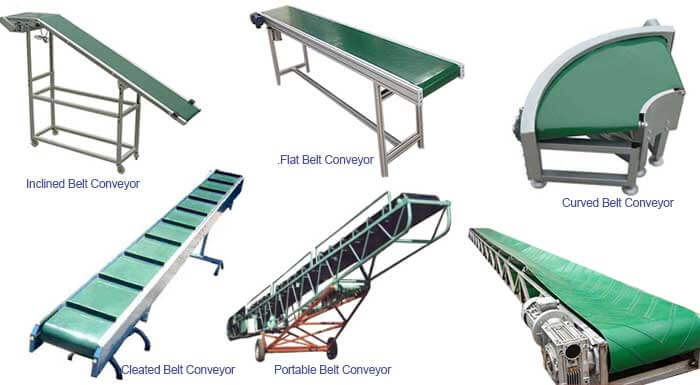 10 Belt Conveyor Types & 5 Types of Conveyor Belt Materials
10 Belt Conveyor Types & 5 Types of Conveyor Belt Materials 10+ Tips Help To Select A Right Conveyor Belt
10+ Tips Help To Select A Right Conveyor Belt Conveyor Belt Working Principle & Application
Conveyor Belt Working Principle & Application

